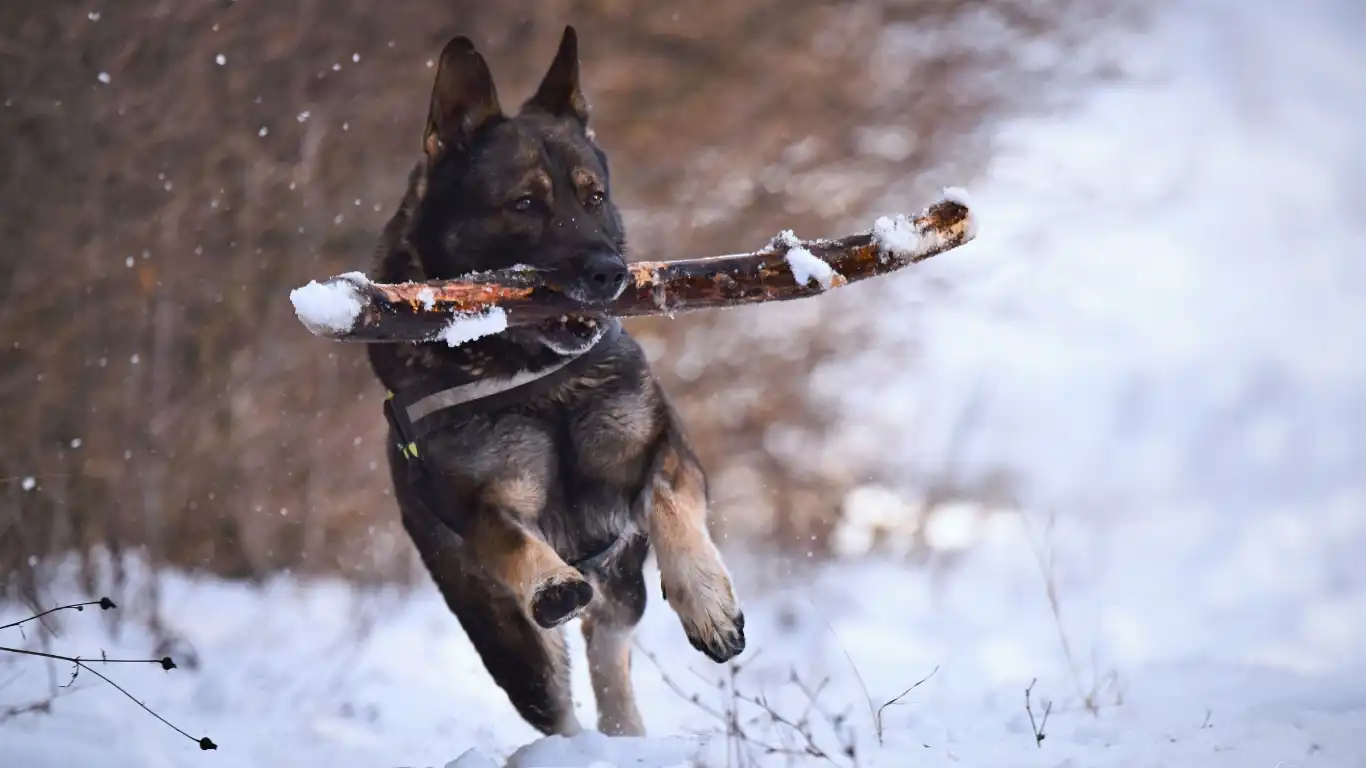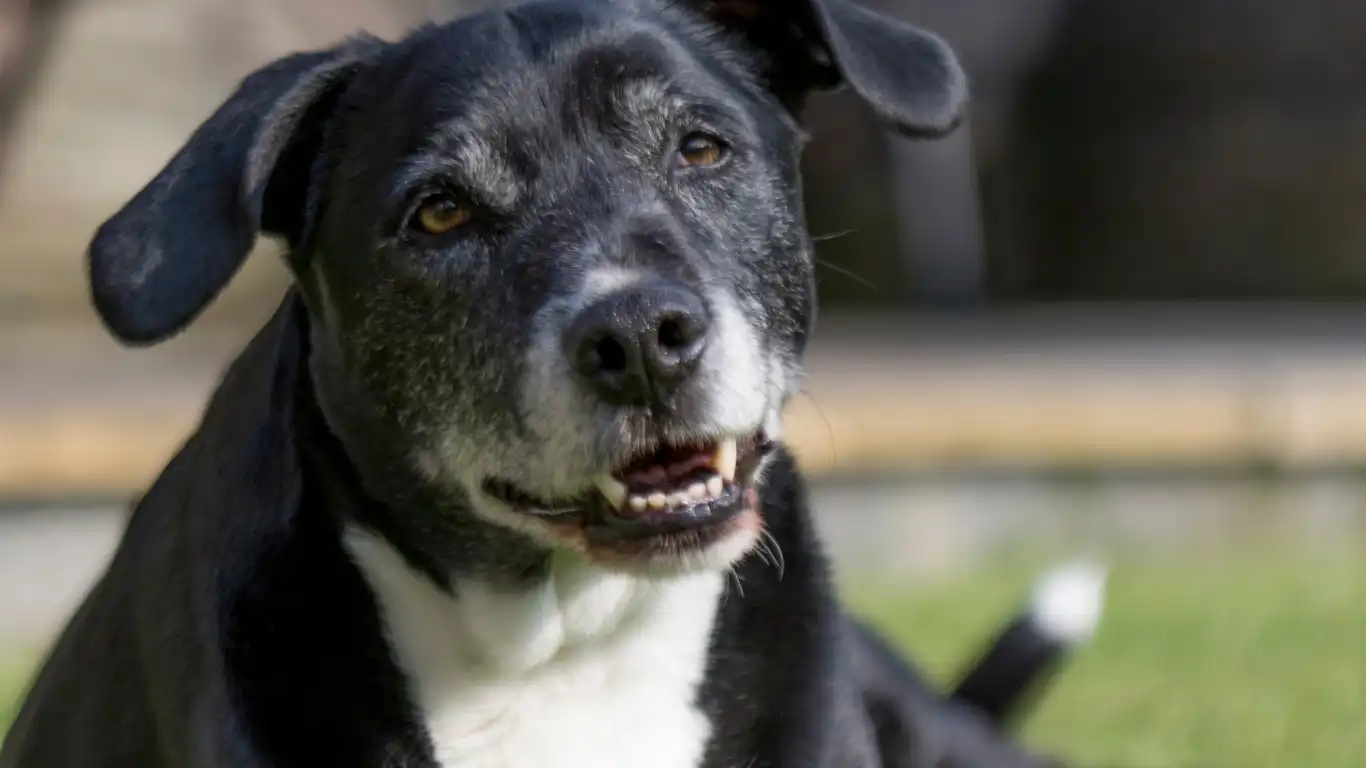10 Effective Ways to Prevent Dog Motion Sickness Naturally
Motion sickness in dogs is a common but often misunderstood issue. As a veterinary technician specializing in nutrition, I’ve seen it firsthand—dogs that can’t handle a car ride without becoming unsettled, drooling excessively, or even vomiting. It’s not just uncomfortable for them, but it can be frustrating for owners who are trying to take their furry friends on trips or to the vet. If you’re dealing with this problem, you’re not alone. And the good news is, there are ways to help prevent it. In this post, I’ll dive into how to prevent dog motion sickness and provide tips that have worked for both my clients and their pets over the years.
What Causes Dog Motion Sickness?

Before we jump into solutions, let’s talk about why dogs get motion sickness in the first place. It’s actually pretty similar to why humans get it: an imbalance between what a dog’s inner ear senses and what they see. When your dog is in a moving vehicle, their inner ear detects the motion, but if they’re not looking out the window (or if the view is too limited), their brain gets confused because what their eyes see doesn’t match what their inner ear feels. This sensory mismatch is what causes the nausea and discomfort we associate with motion sickness.
Common Signs of Motion Sickness in Dogs
Recognizing the signs of motion sickness in dogs is the first step in addressing it. You might notice your dog exhibiting some of these common behaviors during car rides:
- Excessive drooling – One of the most immediate signs.
- Vomiting – This can happen during or after a trip, especially if the car ride is bumpy or long.
- Pacing and restlessness – They might move around or try to get comfortable without success.
- Whining or barking – Your dog may vocalize their discomfort or anxiety.
- Yawning – As a stress response, dogs may yawn frequently when feeling anxious or nauseous.
If your dog shows any of these symptoms, it could be due to motion sickness. However, always rule out other possible health issues by consulting your vet, as some of these signs could also point to other conditions like anxiety or gastrointestinal problems.
How to Prevent Dog Motion Sickness: Simple Solutions

Now, let’s get into the good stuff—how you can help prevent your dog from experiencing motion sickness. Luckily, there are several strategies that can make car rides more comfortable for your dog. As with anything in veterinary care, there’s no one-size-fits-all solution, but these tips have proven effective for many of my clients and their pets.
1. Gradual Exposure to Car Rides
One of the most effective ways to prevent motion sickness in dogs is through gradual exposure. This method helps your dog get used to the sensation of the car moving without overwhelming them. Start by taking short trips around the block, and gradually increase the distance as your dog gets more comfortable. During these short trips, try to keep things calm by speaking softly to your dog and avoiding sudden movements that might trigger nausea.
It’s important to stay patient and not rush this process. For some dogs, it may take time to build up tolerance, and that’s completely normal. Don’t expect an overnight miracle—slow and steady wins the race here.
2. Make the Car Comfortable
Making the car a more comfortable space for your dog can also help reduce motion sickness. Here are a few tips:
- Use a pet seat belt or crate: These can prevent your dog from moving around too much and help them feel more secure during the ride. Dogs that are less anxious are less likely to experience motion sickness.
- Provide a cozy blanket or familiar item: A blanket from home or your dog’s favorite toy can provide a sense of security during the ride.
- Open a window: Fresh air can help your dog feel more at ease, but make sure the window is only open slightly to avoid drafts.
3. Feed Your Dog Lightly Before the Trip
Feeding your dog a light meal before a trip can help prevent nausea during car rides. Avoid feeding your dog a large meal right before you leave. A full stomach can exacerbate motion sickness. Instead, try to feed them a small meal at least 3-4 hours before the trip.
If your dog tends to vomit during car rides, try giving them a small, easily digestible snack just before the trip to avoid an empty stomach. It could help settle their stomach and reduce the chances of nausea.
4. Try Anti-Nausea Medications
If natural methods aren’t cutting it, consult with your vet about the possibility of using anti-nausea medications. There are several options available, such as meclizine or diphenhydramine, which can help manage motion sickness. Your vet will be able to recommend the best option based on your dog’s specific needs.
Keep in mind that medication should not be your first option, but in more severe cases, it can be a lifesaver for both you and your dog. Some dogs may need medication for longer trips or if their motion sickness is more chronic.
5. Keep the Ride Smooth
A smooth ride can make a big difference for dogs prone to motion sickness. Try to avoid sudden stops, sharp turns, or bumpy roads that can trigger nausea. If possible, stick to highways or well-paved roads for a less jarring experience. And if you have to take a longer trip, consider taking breaks so your dog can stretch their legs and get some fresh air.
Remember, the goal is to make your dog feel as comfortable as possible and minimize any unnecessary stress or discomfort.
When to Consult Your Veterinarian

If your dog’s motion sickness continues despite trying these strategies, it might be time to consult your veterinarian. Sometimes, persistent motion sickness can be a sign of an underlying health issue that needs to be addressed. Your vet can rule out other potential causes and help you find a solution that works best for your dog.
Additionally, if your dog’s symptoms worsen or they begin to show signs of stress beyond the usual motion sickness symptoms (such as excessive drooling, fear, or aggression), professional help might be necessary.
Additional Tips for Reducing Dog Motion Sickness

As we continue to explore ways to prevent dog motion sickness, there are a few more tips that might make a big difference in your dog’s travel experience. Motion sickness is a multifactorial issue, so the more strategies you incorporate, the better the chances your dog will enjoy their car rides. These methods might take a little time and experimentation, but they can really pay off in the long run.
1. Adjust Your Dog’s Diet
When it comes to preventing motion sickness in dogs, diet can play an important role. I’ve often recommended adjusting a dog’s meals before a trip to help ease nausea. For example, dogs with sensitive stomachs might benefit from a high-quality, easily digestible diet that minimizes the risk of gastrointestinal upset. Some commercial dog foods are specifically designed to be gentle on a dog’s stomach, containing ingredients like rice and chicken, which are less likely to cause discomfort during travel.
Another option is incorporating ginger into your dog’s diet. You might have heard of ginger being used to ease nausea in humans, and it can work for dogs too. Some pet owners find that adding a small amount of ginger powder or ginger-flavored treats to their dog’s meals before a trip can help settle their stomach. Just be sure to check with your vet first to ensure that ginger is safe for your specific breed or dog.
2. Use Natural Remedies for Relaxation
If you’ve ever been on a long road trip with your dog, you’ve probably noticed that their anxiety can make the motion sickness even worse. Anxiety and motion sickness often go hand-in-hand, and if your dog is already nervous about riding in the car, it can increase their chances of getting sick. This is where natural remedies can help. Things like lavender essential oil or a calming pheromone diffuser can help ease your dog’s nerves, making the car ride less stressful overall.
In my experience, calming wraps, like the ThunderShirt, have also worked wonders for dogs with anxiety. These garments apply gentle pressure to your dog’s body, which mimics the sensation of being hugged, helping them feel more secure and less anxious. I’ve seen it work for many of my clients, especially when combined with the other strategies we’ve discussed so far.
How to Prepare for Long Car Rides

Long car rides can be an entirely different challenge for dogs with motion sickness. The longer the trip, the greater the chance for discomfort. But don’t worry—there are plenty of ways to prepare your dog for a longer journey.
1. Take Frequent Breaks
On longer trips, taking regular breaks is essential. Just like humans, dogs need to stretch their legs and take a breather after being cooped up in the car for extended periods. Stop every 1-2 hours to give your dog a chance to relieve themselves, drink water, and get some fresh air. I always tell my clients that breaks are especially important if their dog is prone to motion sickness, as it gives them a chance to reset and avoid getting too overwhelmed by the motion.
If your dog is particularly prone to stress during travel, plan your breaks in dog-friendly areas where they can get some mental stimulation—like a quick walk around a grassy field or a dog park. This can distract them from their discomfort and help keep their stress levels down.
2. Keep Your Dog Hydrated
Dehydration can make your dog’s motion sickness worse, so it’s important to keep them hydrated during long trips. But here’s the catch: too much water at once can lead to more nausea. Offer your dog small amounts of water regularly to keep them hydrated, but don’t overdo it. Carry a travel-friendly water bowl or a collapsible water container to make it easy to give your dog a drink whenever they need one.
It might also help to offer your dog some ice cubes or small pieces of frozen treats. These can keep them cool, hydrated, and satisfied without overloading their stomach. Plus, it’s always a fun way to give them a little something extra on the road!
3. Consider a Travel-Friendly Car Seat
If your dog tends to get motion sickness from constantly shifting around, a car seat designed for pets might be a game-changer. Some car seats are designed to elevate your dog so they can see out the window while still being safely restrained. This helps with the sensory imbalance that causes nausea. Seeing the world around them might help settle their inner ear and reduce the chances of motion sickness.
Many of these seats come with safety straps to keep your dog in place, reducing their anxiety and preventing them from moving too much. Plus, they give your dog a cozy, enclosed space where they can feel more secure. It’s a win-win!
How Diet and Timing Affect Motion Sickness

As we discussed earlier, diet plays a crucial role in preventing motion sickness. But did you know that timing is just as important? When it comes to feeding your dog before a car ride, timing your dog’s meals is a small detail that can make a big difference.
It’s essential to allow enough time for your dog to digest their food before hitting the road. A full stomach can contribute to nausea, so aim to feed your dog at least 3-4 hours before the trip. If your dog tends to get motion sick during longer trips, give them a small, easily digestible snack right before the ride. This can help prevent an empty stomach, which can also contribute to nausea.
How to Choose the Right Food for Your Dog’s Stomach
Choosing the right food for your dog can also play a role in preventing motion sickness. While I always recommend discussing your dog’s diet with your vet, I’ve seen firsthand how certain foods can make a big difference. Dogs with sensitive stomachs or a history of gastrointestinal issues may benefit from a more gentle diet. In some cases, a special formulation with easily digestible ingredients like rice and chicken can help keep your dog’s stomach calm.
If you’re not sure what’s best for your dog, don’t hesitate to ask your vet for advice. They can guide you to the right type of food and provide specific recommendations based on your dog’s individual needs.
Veterinary Approaches for Severe Motion Sickness

While many dogs experience mild motion sickness that can be managed with a few simple techniques, some dogs struggle with more severe symptoms that need professional intervention. If you’ve tried various strategies without success, it may be time to involve your veterinarian to explore more advanced options for treatment. Veterinary professionals can provide a deeper understanding of your dog’s unique needs and offer treatments tailored to their specific symptoms.
Prescription Medications
For dogs suffering from severe motion sickness, vets may prescribe medications to help manage the symptoms. One of the most common options is anti-nausea medications, such as ondansetron or meclizine. These medications work by blocking the signals that trigger nausea and vomiting in the brain. In many cases, medication can make a huge difference, allowing your dog to enjoy longer car trips without distress.
However, it’s important to note that medications should be used as a last resort and under the guidance of your vet. I’ve seen a lot of success with these treatments, but they work best when paired with lifestyle changes like reducing stress, modifying diet, and keeping travel periods short. You should never medicate your dog without consulting your vet to ensure that the treatment is safe and effective for your dog’s individual health profile.
Behavioral Modification and Training
Another effective treatment involves behavioral modification. This type of training focuses on reducing your dog’s anxiety and stress around car rides, which can significantly improve their ability to handle motion. Behavioral training techniques, such as counter-conditioning or desensitization, work by changing your dog’s emotional response to the car. These techniques gradually introduce your dog to the car in a non-threatening way, helping them associate travel with positive experiences instead of discomfort.
For example, I’ve had clients start by simply sitting in the car with their dog for a few minutes without going anywhere. Over time, they slowly increase the duration of the car sittings, introduce treats or toys to make the experience positive, and eventually take short trips around the block. This gradual approach helps dogs build positive associations with car rides, reducing anxiety and motion sickness over time. While it takes patience and consistency, it can lead to long-term success.
Alternative Treatments for Motion Sickness in Dogs

In addition to medications and behavioral training, there are several alternative treatments that may help manage motion sickness in dogs. Many pet owners turn to holistic remedies that aim to address the underlying causes of motion sickness, including stress and anxiety. While these treatments aren’t a substitute for professional veterinary care, they can provide additional relief for dogs with mild to moderate motion sickness.
Acupressure and Acupuncture
Acupressure and acupuncture are alternative treatments that have gained popularity for treating motion sickness and anxiety in dogs. Acupressure involves applying pressure to specific points on the dog’s body, while acupuncture uses fine needles to stimulate these same points. Both treatments aim to promote balance and improve circulation, which can help alleviate nausea and improve overall well-being.
While I’m not a licensed practitioner of acupuncture, I’ve seen some clients experience success with these methods after seeking treatment from a qualified veterinary acupuncturist. If you’re interested in this approach, make sure to consult with your vet to find a certified professional in your area. Many holistic vets incorporate these practices into their treatment plans, and they can be an effective option for dogs who haven’t responded to other treatments.
Herbal Remedies
Herbal remedies are another option for managing motion sickness in dogs. There are several herbs that can have calming or anti-nausea effects, such as ginger, chamomile, and valerian root. Ginger, as mentioned earlier, has long been known for its ability to soothe nausea, and it can be given to dogs in small amounts as a preventative measure before car rides.
Chamomile is known for its calming properties, which can help reduce anxiety and make your dog feel more relaxed during the ride. Valerian root is another herb used for its sedative effects, which may help calm anxious dogs before and during travel. When considering herbal treatments, always consult your vet first, as some herbs can interact with medications or cause adverse effects in certain dogs.
Why Consult a Vet for Chronic Motion Sickness?
If your dog’s motion sickness seems to be chronic and doesn’t improve with basic interventions, it’s critical to consult a veterinarian. Chronic motion sickness can sometimes be a sign of other underlying issues, such as vestibular disorders, gastrointestinal problems, or anxiety disorders. In these cases, a thorough veterinary examination is necessary to rule out other conditions and develop a more effective treatment plan.
Sometimes, motion sickness is exacerbated by anxiety or fear, especially if your dog has had negative experiences in the car before. In these cases, it’s not just the motion that’s causing discomfort, but the anticipation of the ride itself. A veterinarian can help diagnose if anxiety is contributing to the problem and recommend appropriate treatments such as anti-anxiety medication or behavior modification techniques.
Additional Resources for Dog Owners
If you’re looking for more information on preventing and managing motion sickness in dogs, there are several excellent resources available:
- American Kennel Club (AKC) – Offers valuable tips on dog health, including travel and motion sickness.
- PetMD – A trusted resource for pet health, providing expert advice on treating motion sickness and other health issues.
- National Institutes of Health (NIH) – For more information on research into motion sickness and treatments for pets and humans alike.
It’s always a good idea to stay informed and consult with your vet if you’re unsure about the best approach for your dog. Remember, motion sickness can be frustrating, but with patience and the right strategies, you can help your dog feel more comfortable on their travels.
Disclaimer
The information provided in this article is for general educational purposes only and is not a substitute for professional veterinary advice, diagnosis, or treatment. Always seek the advice of your veterinarian or another qualified pet health provider with any questions you may have regarding your dog’s health. Never disregard professional advice or delay seeking it because of something you read in this article.




